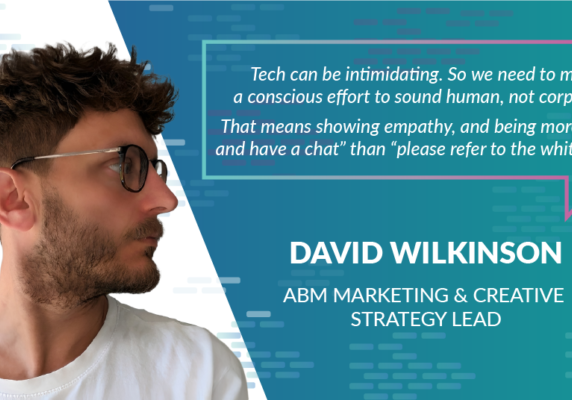Part 2 of 2: Voice-recognition, the greatest marketing disruptor

Welcome to Part 2 of 2: Voice-recognition, the greatest marketing disruptor.
If you missed part one, just click here and catch up from the beginning where we explain how voice-recognition has positioned itself as a game-changer for brands and marketers.
But how does this epic disruptor impact marketing?
If you thought that Google was the main search engine being used for voice searches, as is the case for typed searches, you’d be wrong. Alexa & Cortana both use Bing. These two tech giants represent the largest swell of voice enabled devices – meaning more voice users will naturally gravitate to using the Bing search engine over Google. However, this is only the beginning for how voice searches disrupt the status-quo.
As already mentioned, the way in which users look for content using their voice is unique – and the algorithms that search engines use, are constantly evolving to accommodate this. But there is a far greater bitter-sweet pill that brands will have to swallow, and it’s one that promises to change the playing field for good.
Unlike typed searches, voice-enabled searches appear to be concerned with achieving accuracy through convenience, rather than providing users with choice and quantity. Nowhere is this more evident than the matches that are returned following a voice-searched query. Or should that be match? Often the results of a voice search yields not several, but a single result.
This makes sense when we think of voice searching as a hands-free solution. For brands that successfully align their content to voice search engine algorithms – it means they will become ‘king of content hill’, but for those who do not, there will be no prize (and no mention) for second and third place.
Best steps to get vocal about
While this is indeed a steep challenge, we want to focus on the positive and the opportunity voice-recognition technology can afford brands. So, with this in mind – we’ve put together four key tips to keep your branding and marketing efforts on track and to ensure your content stands a better chance of being found – regardless of the method of searching.
- Let your analytics show you the way. Find the user searches on your website that appear as natural language. Create a spreadsheet and search for similarities or patterns. What questions are people asking when they are searching for your site and content.
- Next, choose some long-tail keywords that make use of natural-flowing language. Pay attention to ensure they represent the way people vocalise these.
- If you are struggling with the previous step, try looking at topic-related searches that are made by users within online forums. If you need more assistance with this, you can experiment with the many online tools like ‘Answer the Public’ and ‘Seed Keywords’. These websites allow you to see what questions users are searching for. Answer the Public does a great job of beautifully illustrating the range of questions people use to search for content. Seed Keywords allows users to create scenarios which can be shared among known contacts to reveal insights into how others search – all within a collaborative context.
- As an extension to these steps – see if you can gather the data from other areas of your operations. For instance – checking the call logs of your customer / sales support phone conversations as well as chat bot scripts are both much closer to the way that people use voice searches when they are looking for content online.
Something to keep in mind is that voice searches are far more likely to be location determined – with an estimated 1 in 3 voice searches specific to where the user is searching from.
While identifying the locations that B2C customers may be more inclined to use voice searching is perhaps a slightly easier prospect to conceive, e.g. a customer using voice search to check stock availability of a product while driving to the store – B2B brands should consider the likely scenarios where their audiences will be voice searching from. This could be event specific, such as attending an industry trade show, a product demonstration or ensuring key data is available ahead of a stakeholder’s meetings etc. As the search matches are limited, it’s crucial B2B brands have a strong voice SEO presence so as not to lose out to their competition.
You have another new voicemail…
The smartphone has been a significant catalyst for the rapid evolution of voice-driven interfaces. This has given users the opportunity to experiment and familiarise themselves with the technology without the needing to deliberately invest in it. The advances in speech recognition continue to improve the accuracy as as well as the scope for voice technology.
The advances in combining AI and analytics with voice-recognition software is already producing sophisticated applications and products. From intelligent chat bots, to voice-enabled security access such as bio-metric authentication, to improved automation of products and services – this technology is quickly permeating a variety of industries.
Web designing a new standard for voice-controlled interfaces
As user-demand increases – a point where voice-enabled interfaces reach a universal standard looks extremely likely. In the same way as having business social media accounts are the norm – voice interoperability for users will move in the same direction.
It’s going to be interesting to see how brands make the most of voice recognition – an inherently customer-focused technology, that carries strong applications for inbound marketing – as well as search engine optimisation. In addition, voice technology is already proving to be a powerful incentive for brands to generate new web designs that work in tandem with this interface.
As more businesses start to realise the benefits of embracing voice into their digital customer touch-points, it’s safe to assume that we’ll see more brand messaging that champions this tech adoption and lets their customers know that they can be interacted with in the same way. For those brands still sitting on the fence about voice-recognition, the window of opportunity to get out, ahead of the competition is starting to close.






